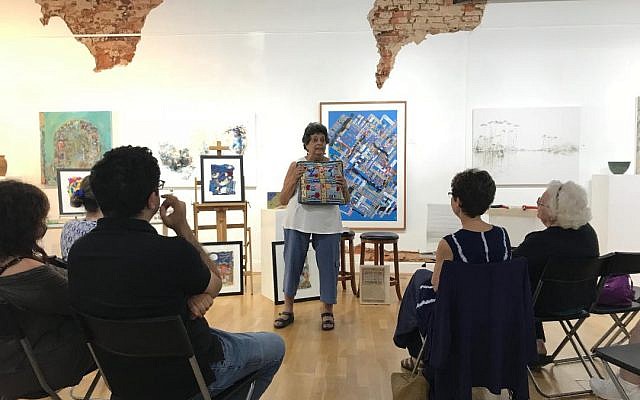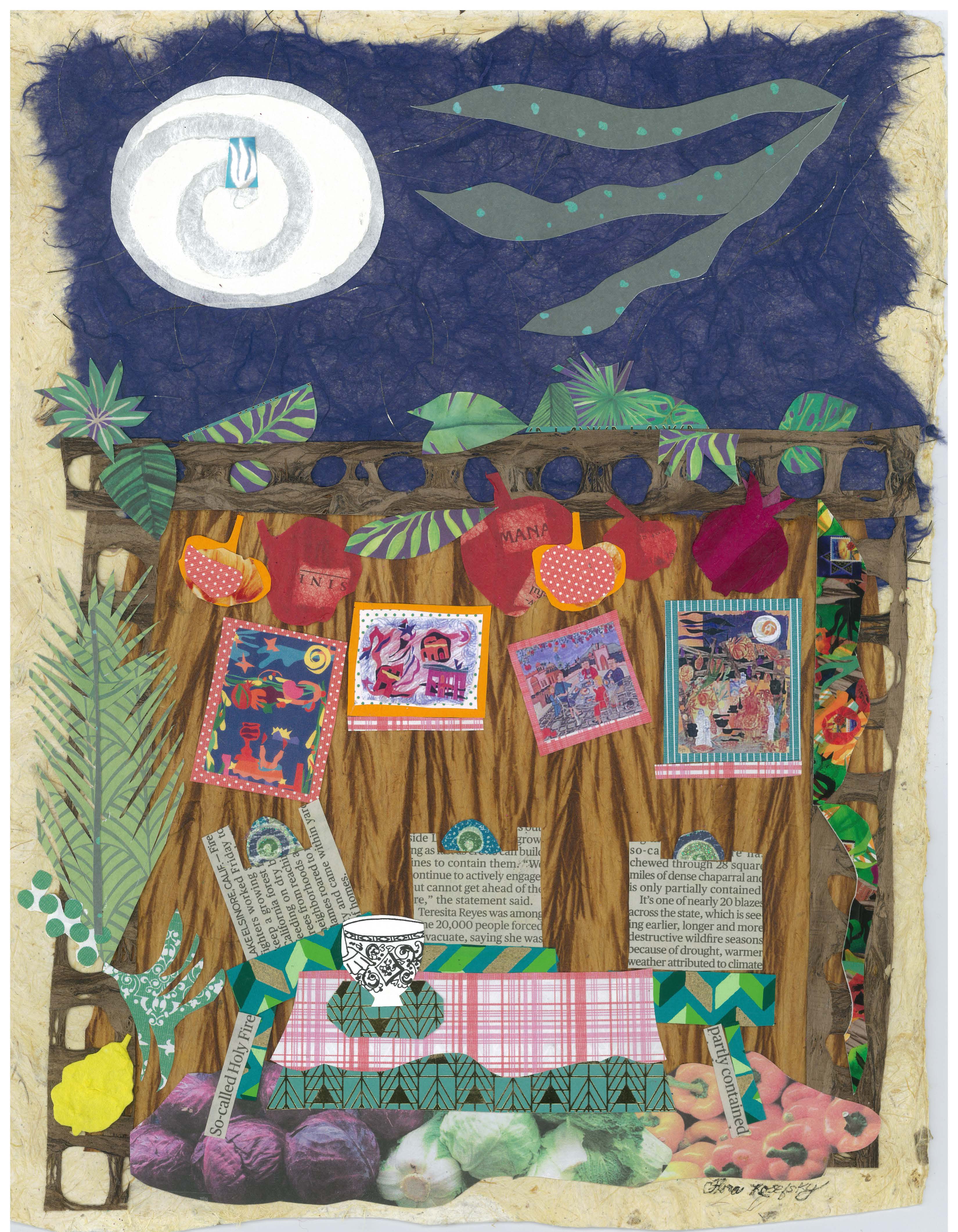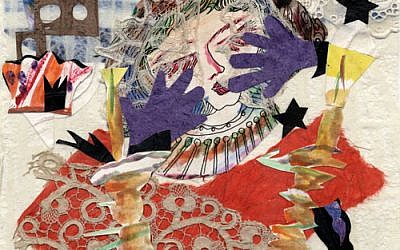Inspired by Sukkot, Torn from Life
Artist Flora Rosefsky uses strips of newspaper clippings, torn bits of diary pages and other examples of what she calls ephemera, texts taken from everyday life.

Atlanta artist Flora Rosefsky found inspiration for her newest work in the transitory covering of the roof of the Sukkah, the so-called s’chach that is often made of leaves and twigs.
But her new piece, highlighted Sunday at dk Gallery on the Marietta Square, was constructed, instead, of strips of newspaper clippings, torn bits of diary pages and other examples of what she calls ephemera, texts taken from everyday life.
“It’s a very conceptual piece,” she explained. “For the paper strips that represent the roof of the Sukkah, I took my father-in-law’s diary that he created before he died, and I chose clippings of day-to-day things that were going on around the world. Life happens so quickly. We don’t know what’s going to happen tomorrow.”
Rosefsky’s large-framed piece, which measures 3 feet by 5 feet, was created against a sky-blue background, to give the impression of the light filtering through the impermanent roof of the temporary structure as glimpsed from below.
“The s’chach has to be open just enough that one can see the sky above, to remind us who is really protecting us,” she said. “I like this holiday so much because, as you sit in the Sukkah, you get the feeling that this is a holiday that’s very spiritual. I feel the sense of a G-d looking down on me.”
Rosefsky often uses nothing more than a pair of scissors and a stack of colored paper sheets in her art. In this piece, she used paper with some connection to her personal history or the history of recent times.

She meant the work not only to symbolize the flimsy nature of the outdoor structure, but to call attention to the fleeting nature of our physical existence, our relationships, and what we create in our everyday lives.
“Many of us think ‘I’m never going to move; I’ll never leave my house,’” she said, “but we may experience financial disasters, divorce, or other changes. Our homes are more temporary than we realize. As you get older, as I have, you realize that it is the relationships we have with our friends and family that are the most important; it’s not the physical buildings we live in.”
Also included in the exhibit, “Faith & Hope,” are a series of Rosefsky’s works that commemorate the events of the Jewish holidays during the rest of the year. There are cut paper representations of 15 rituals that are a regular part of Jewish life.
In her short talk Sunday, she spoke about the role of the shofar in the just-completed High Holidays and described the importance of ritual items in the observance of Shabbat. Her work, she feels, gives form and color to the restless time travel in which we all participate, in some way.

She included a quote from Michael Strassfeld, who helped create the best-selling series, “The Jewish Catalog,” beginning in 1973.
“In our lives, we are all ceaseless time travelers,” Strassfeld wrote, “as we move from moment to moment, event to event. The Jewish people have developed a map for traveling in time. Called the ‘festival cycle,’ this map has its origin in Torah and has continued to develop and change, even in our era.”
“Faith & Hope” runs through Saturday, Sept. 29 at dk Gallery, 25 West Park Square, Marietta, 30060. For more about Rosefsky, visit www.florarosefsky.com.



comments